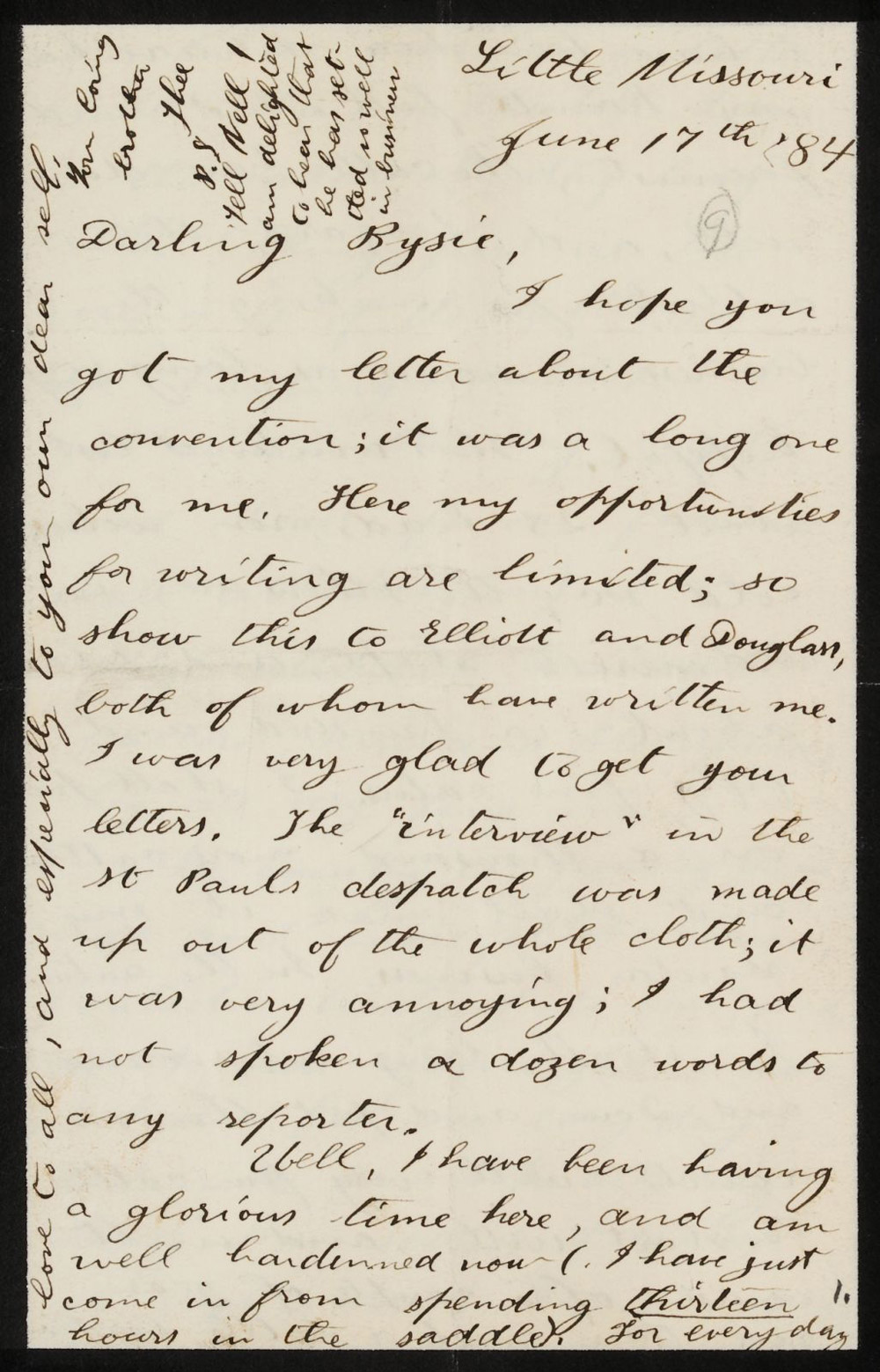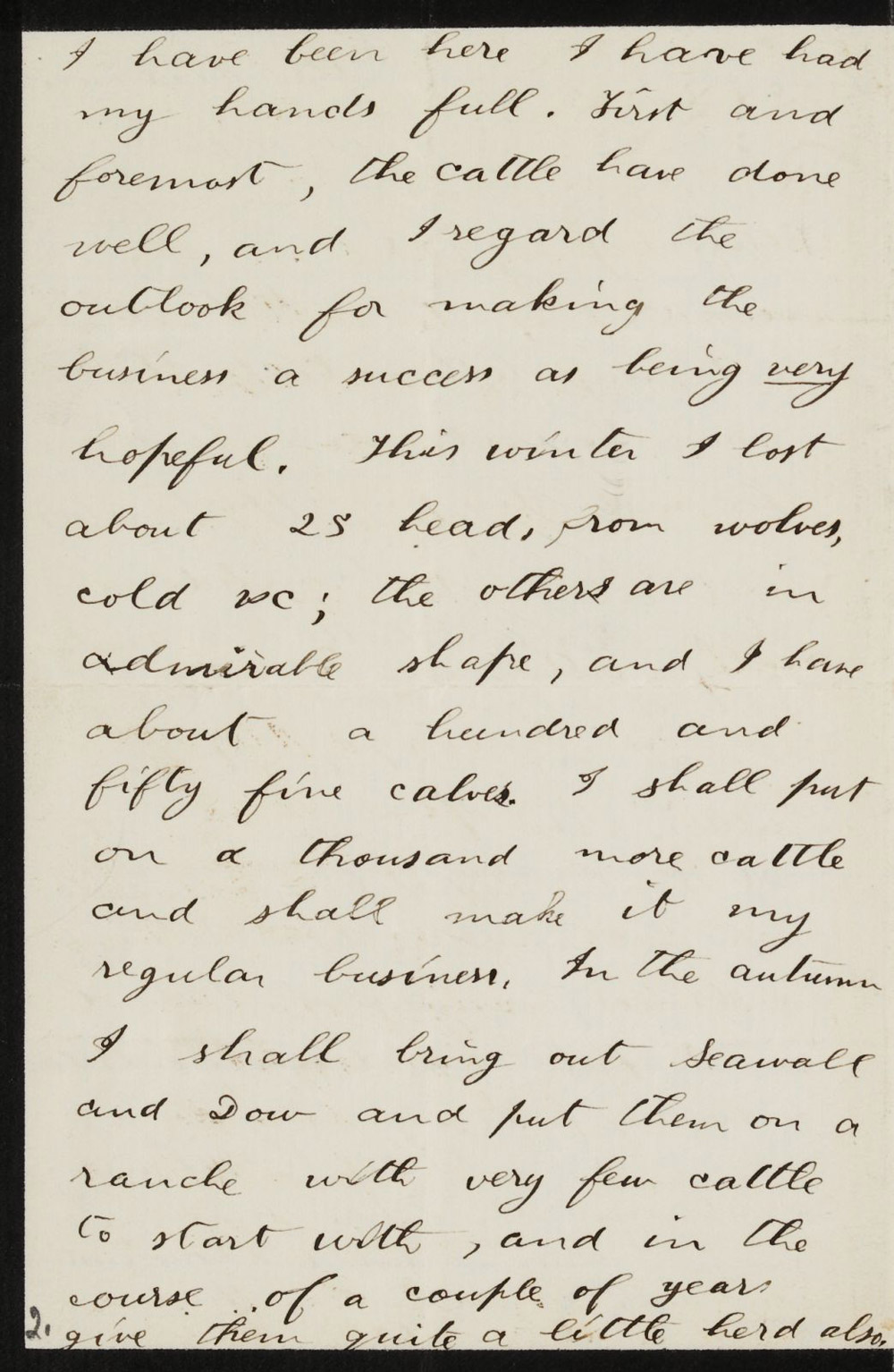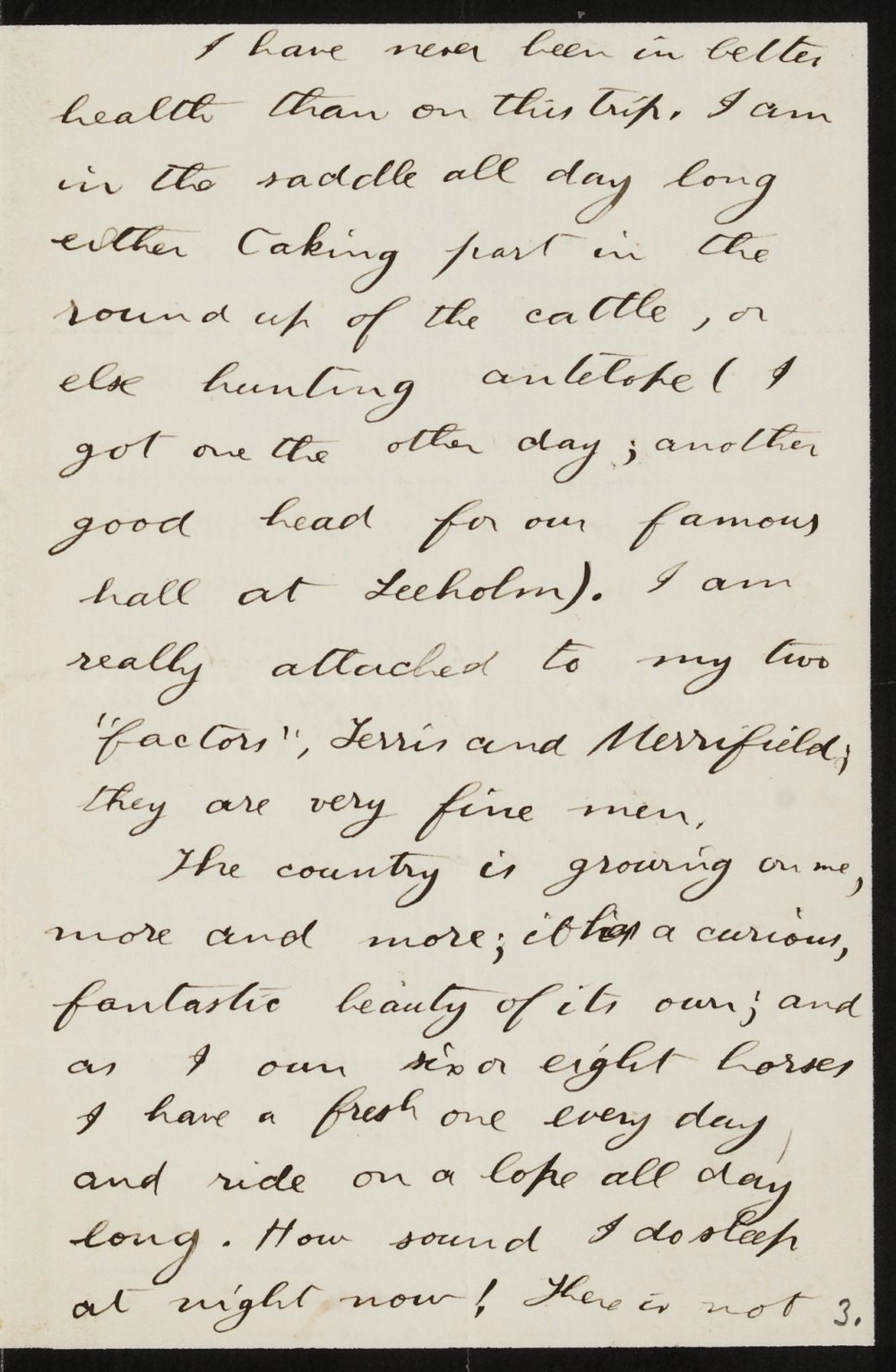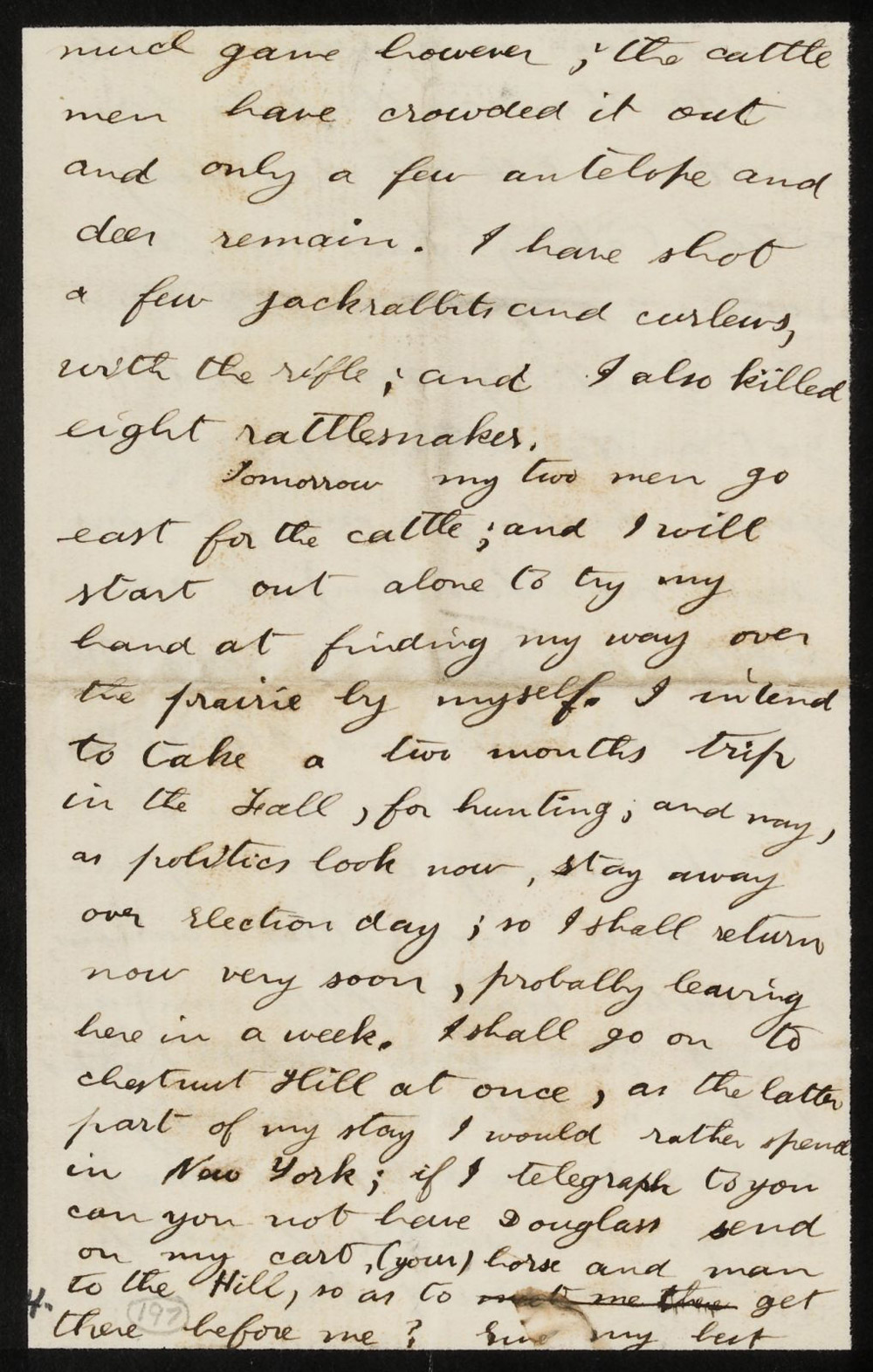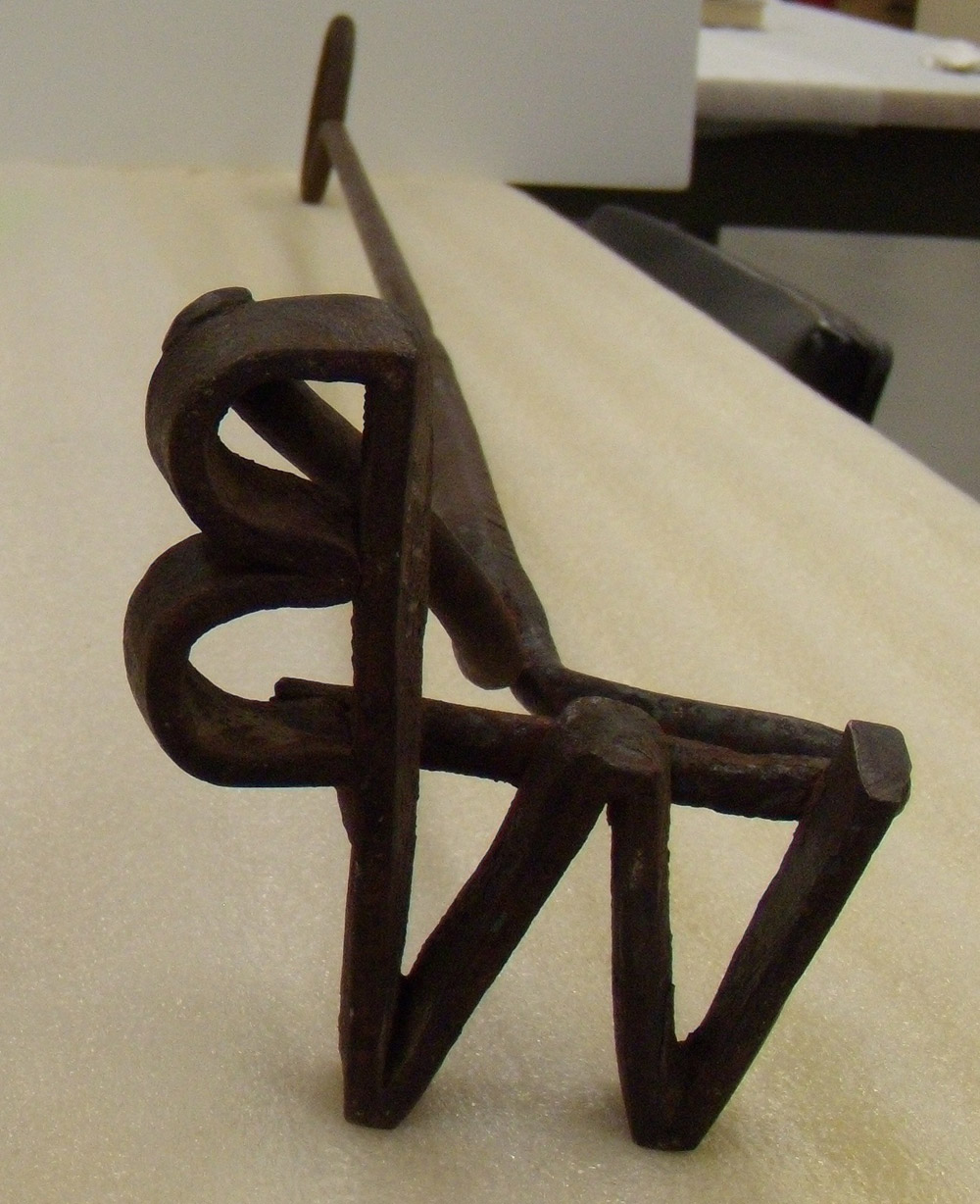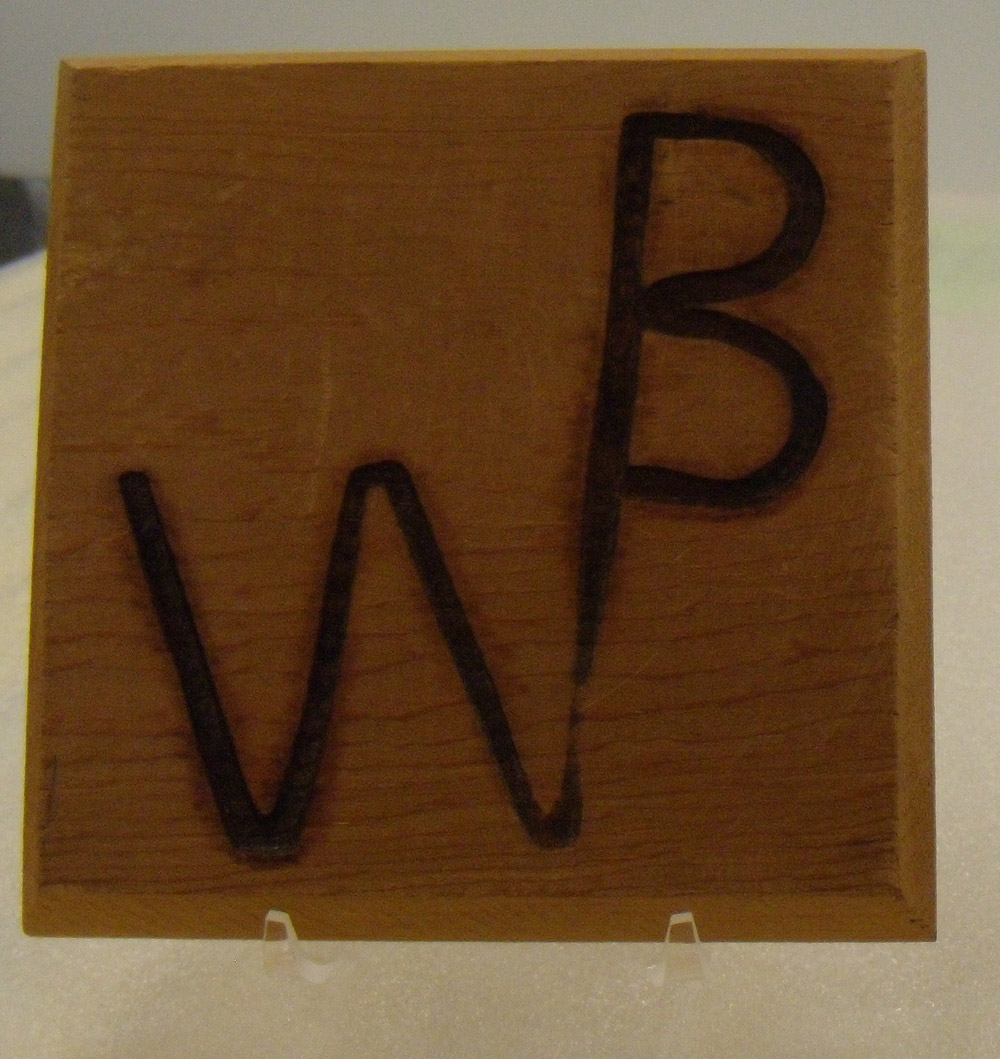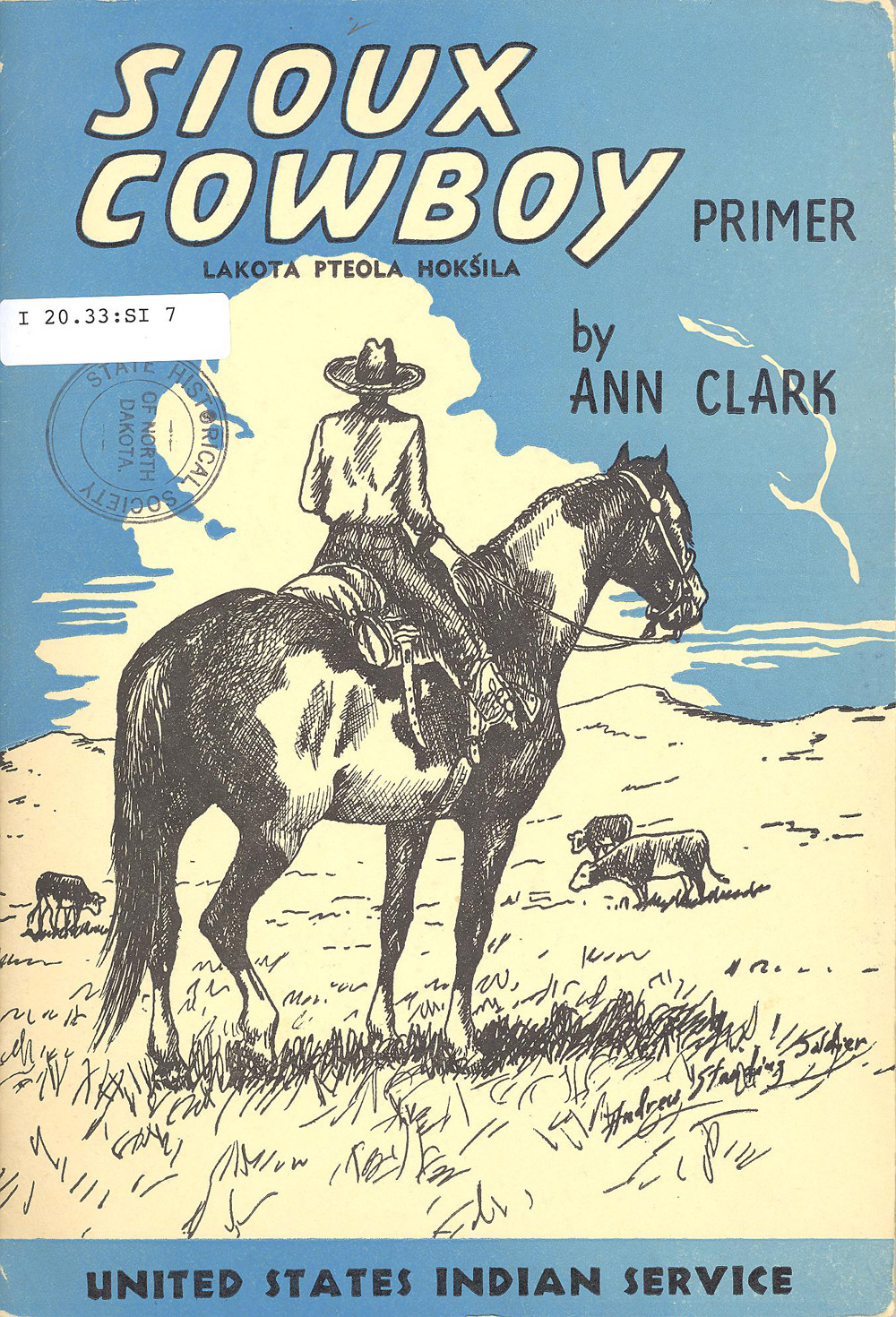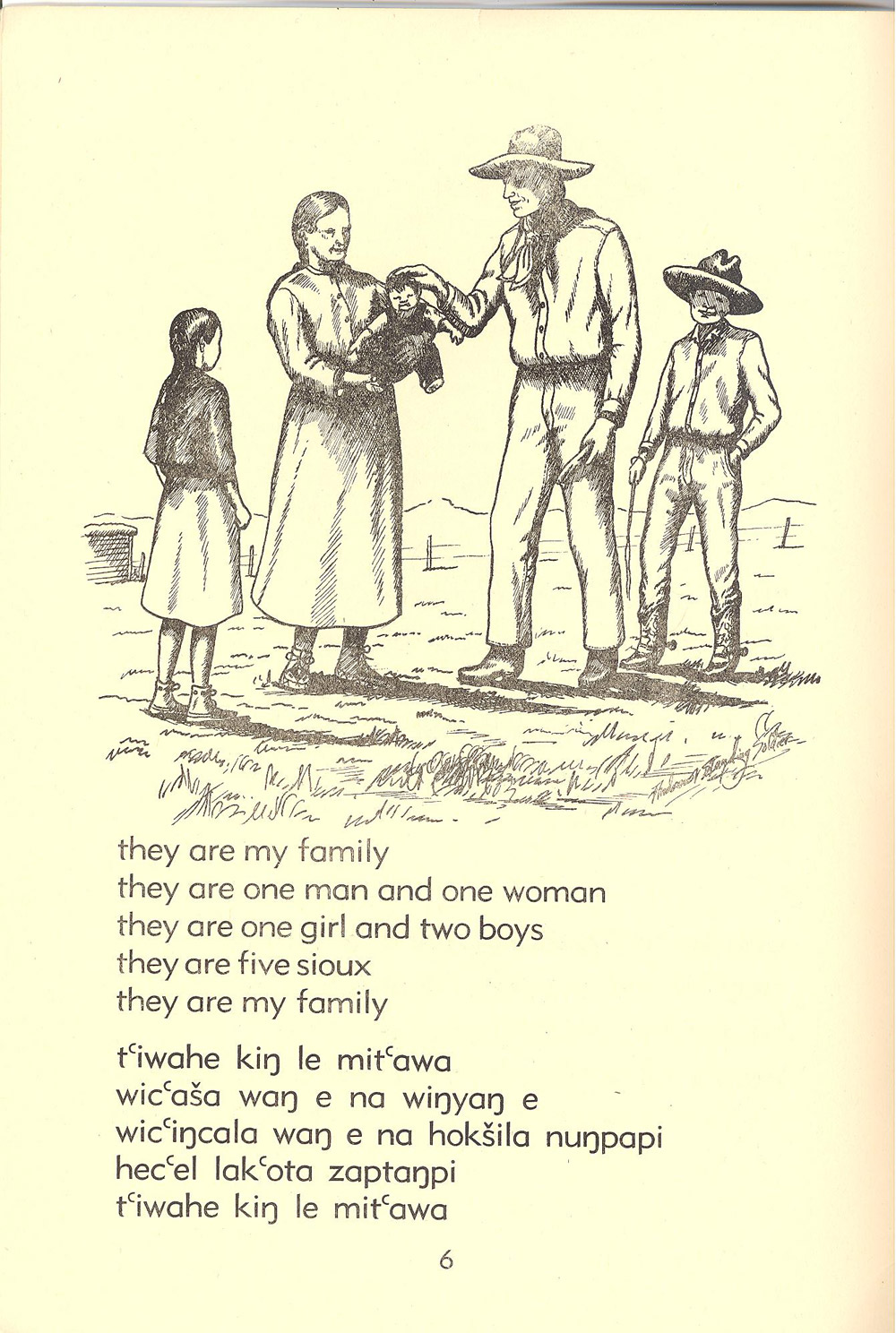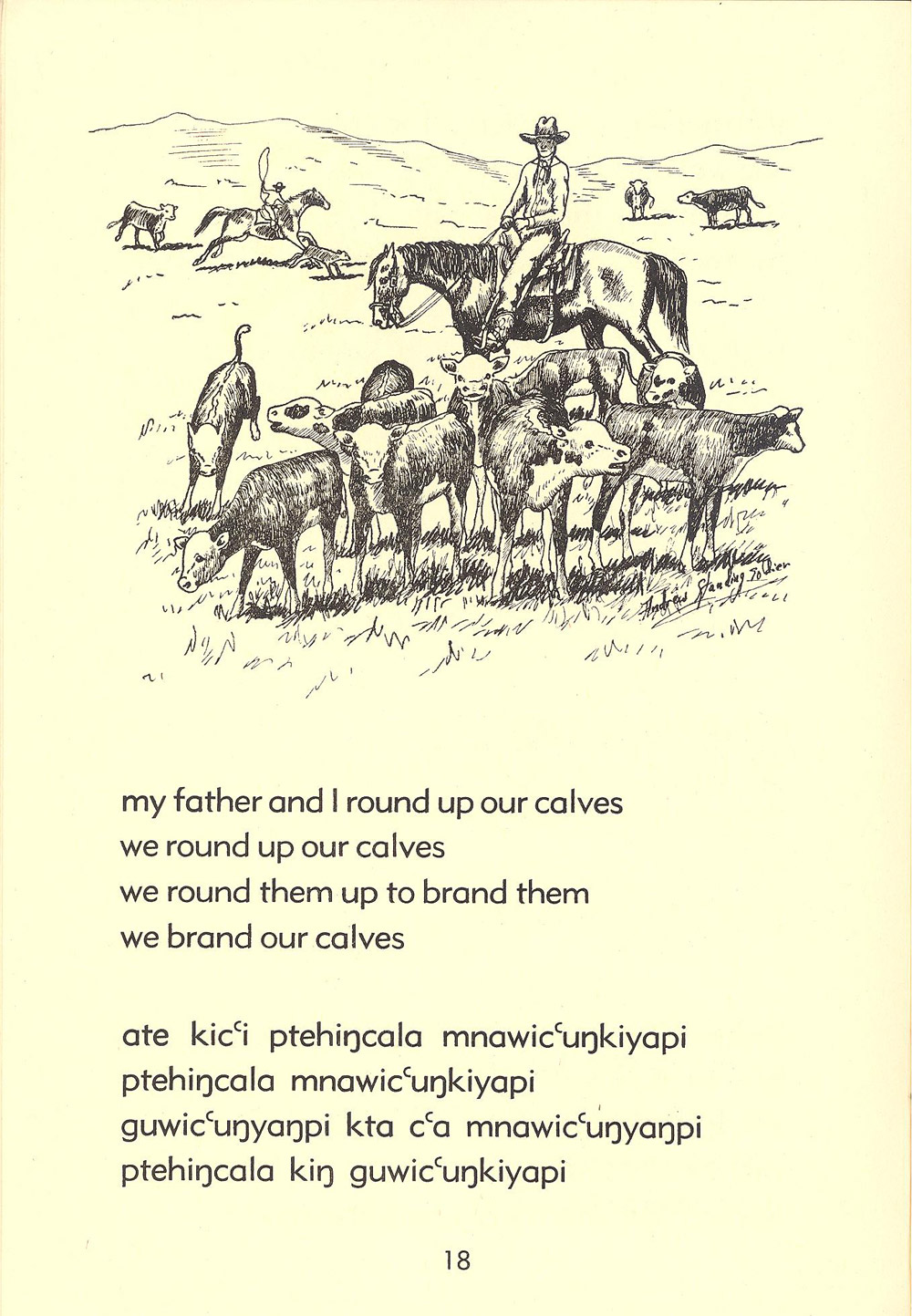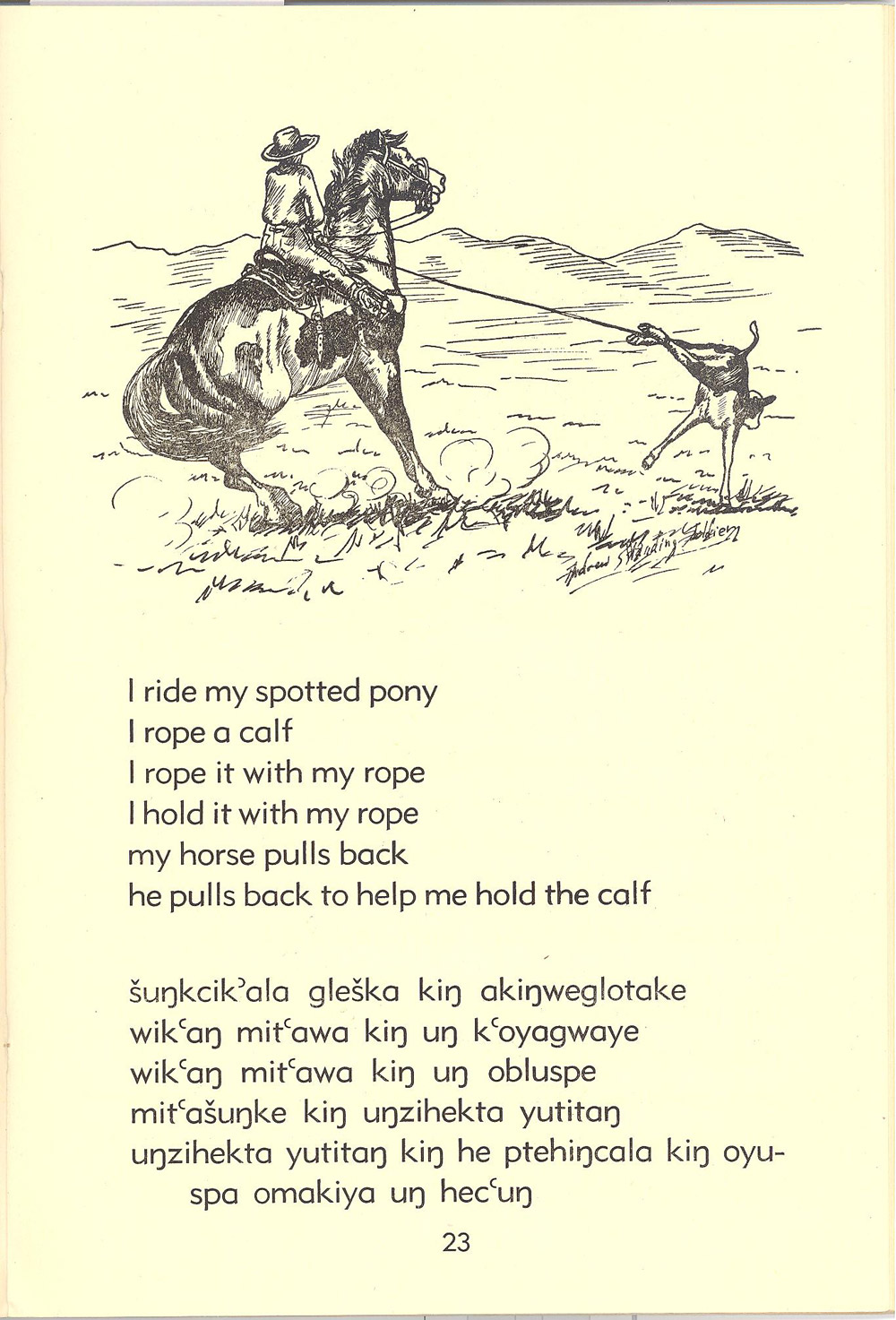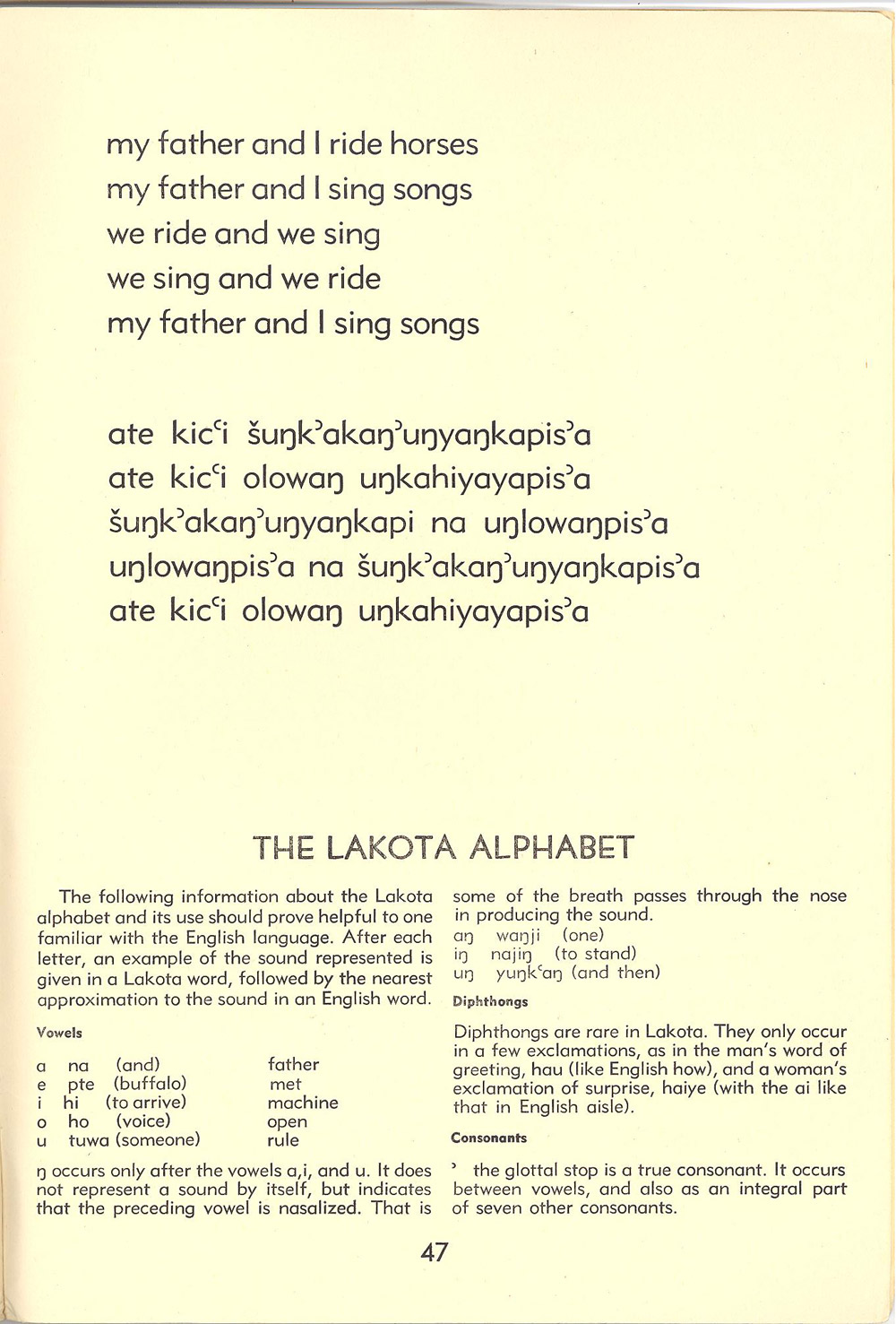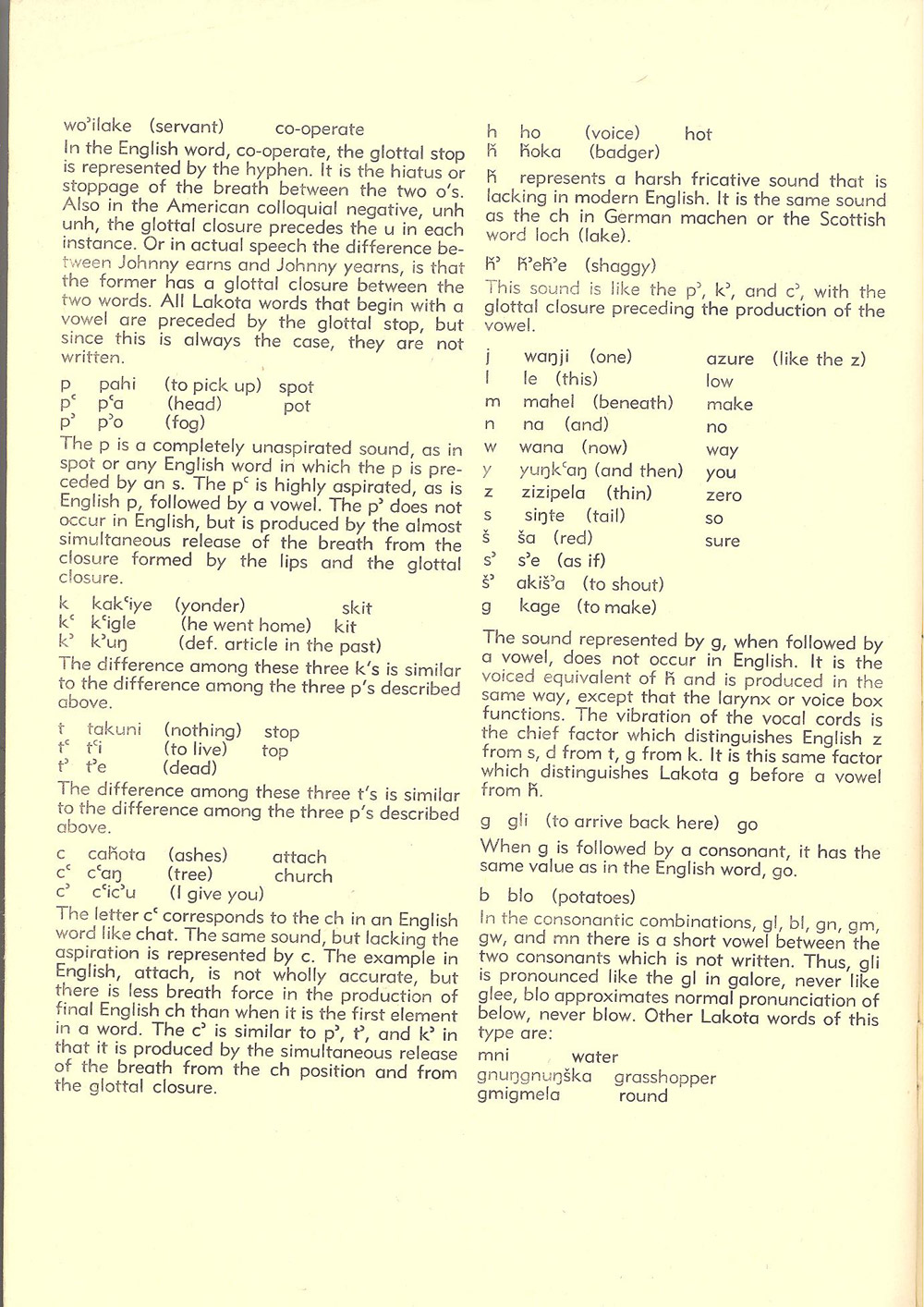Ranching, or the raising of livestock (such as cattle, sheep, or horses), developed in western Dakota where little rainfall and the rough badlands made farming very difficult. Ranchers, however, could not get a start until the railroad reached western towns. Railroads took cattle to the big markets in Chicago and Omaha. The Northern Pacific Railroad reached the Montana-Dakota border in 1880. Then ranchers could ship livestock from Medora, Dickinson, and Bismarck.
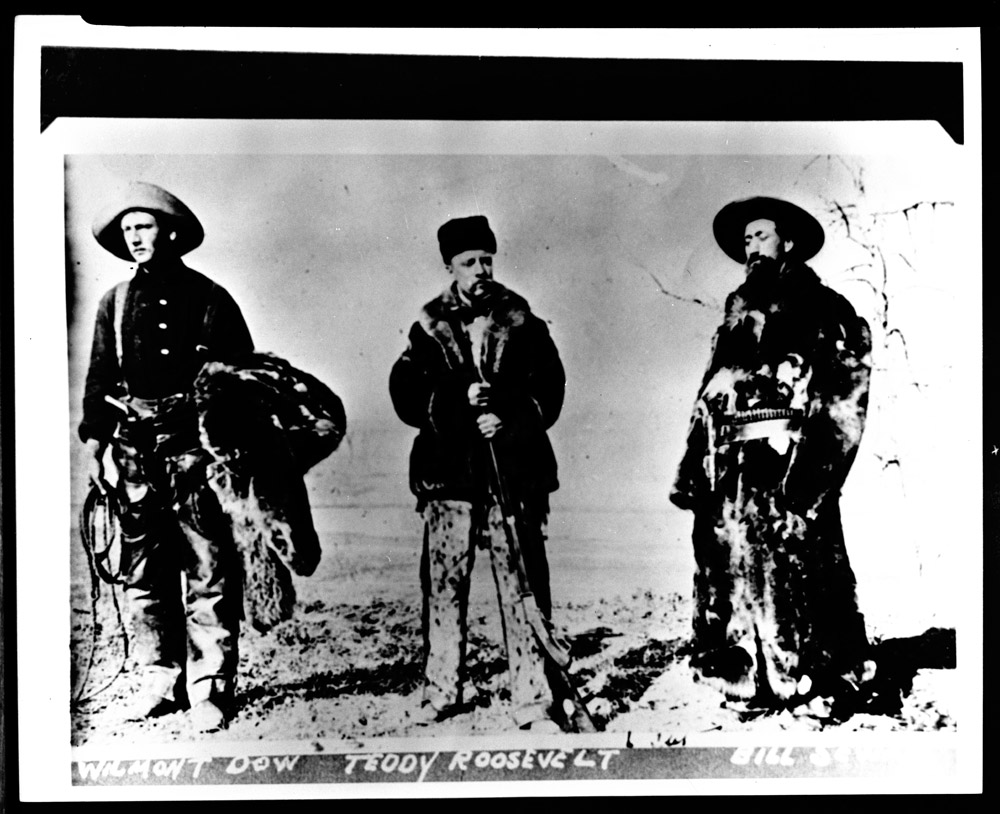
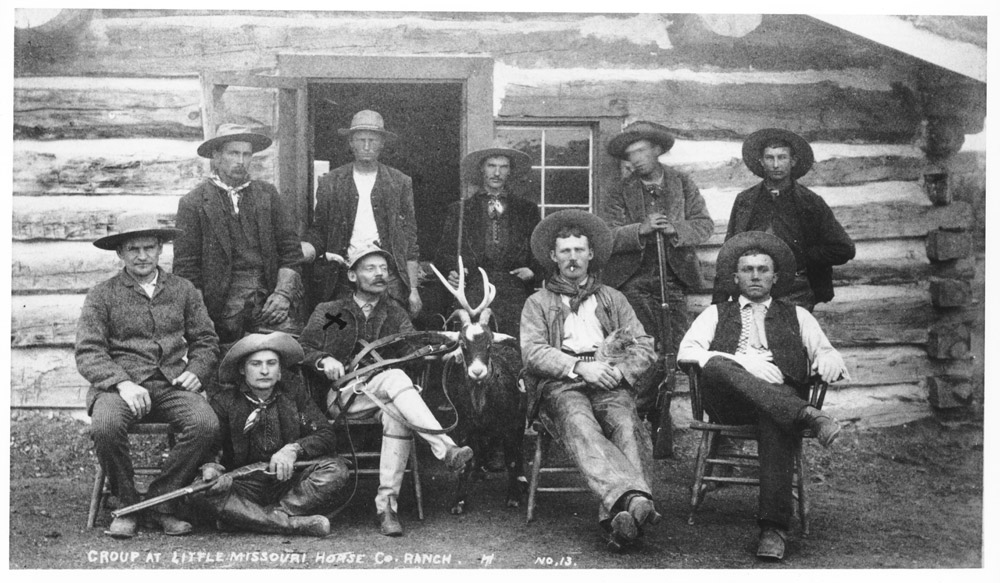
Ranchers also needed lots of land with water and nutritious grasses. They found land and good grass in western Dakota. Under federal law, ranchers could claim or purchase three-quarters of a section of land, but they needed much more. Ranchers let their cattle graze on federal land that no one had claimed. They also used or purchased railroad land. Until someone claimed the land, it was considered open range. Ranchers shared the open range; they separated their cattle at round-ups in the spring and fall.
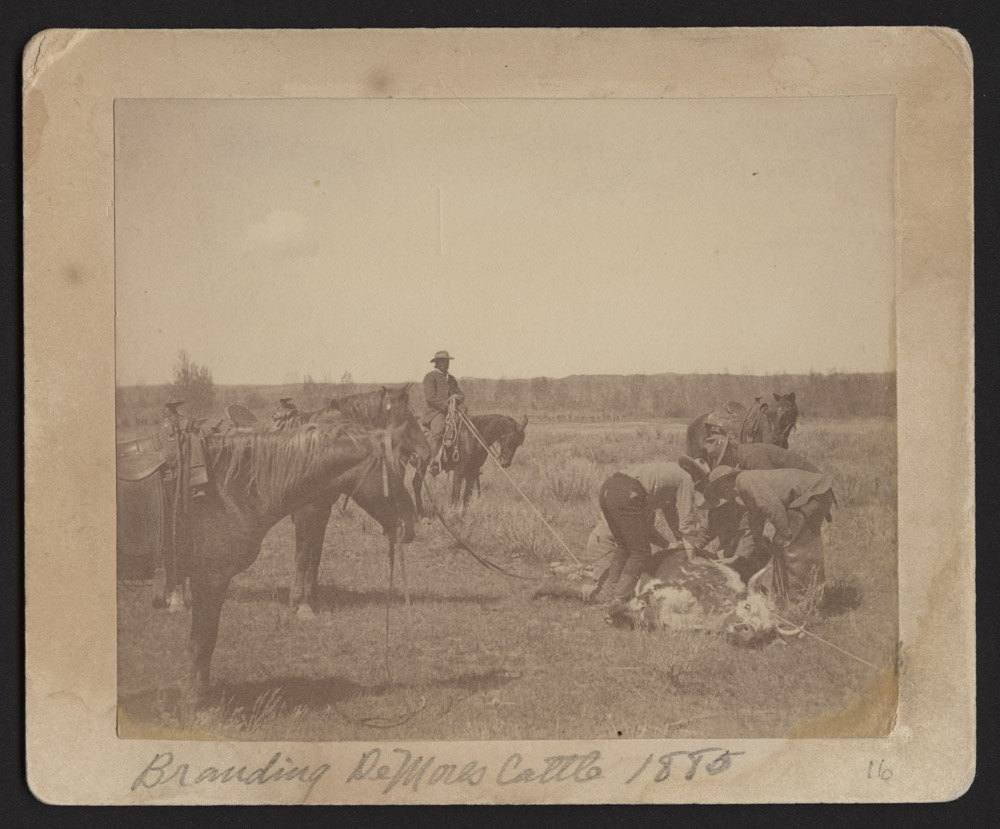
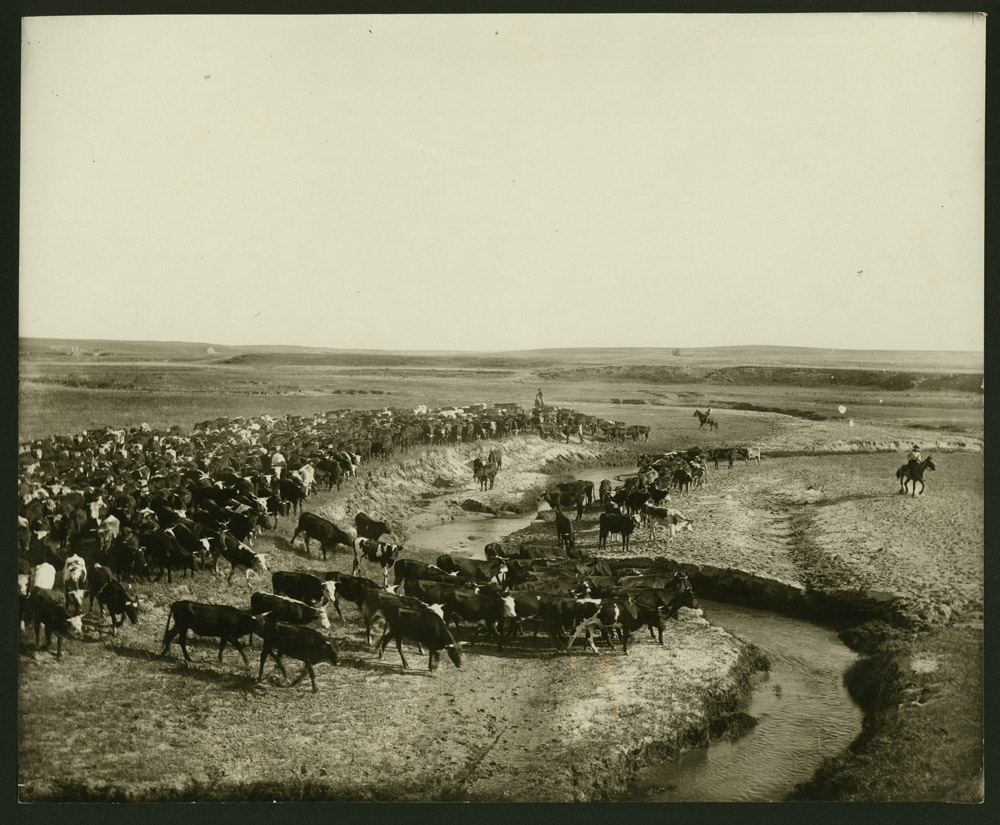
In 1883, Antoine Amedee Marie Vincent Amat Manca de Vallombrosa, the Marquis de Mores (1858-1896), a French aristocrat, planned to develop the western beef cattle industry. He established a ranch and built a packing plant (a place where cattle were slaughtered) at a new town he called Medora. That same year Theodore Roosevelt, (See Image 1) a wealthy young legislator from New York, came to western Dakota. He bought a partnership in a cattle operation. (See Document 1) Other young, wealthy easterners, such as Arthur C. Huidekoper, (See Image 2) saw an opportunity to become even wealthier by investing in western cattle. Ranchers raised cattle on the range and organized spring round-ups to brand the calves. (See Image 3) At the fall round-up, ranchers and their cowboys sorted cattle for shipping to markets in Omaha and Chicago. (See Image 4)
Document 1: Roosevelt Letter
Little Missouri
June 17th ‘84
Darling Rysie,
I hope you got my letter about the convention; it was a long one for me. Here my opportunities for writing are limited; so show this to Elliott and Douglass, both of whom have written me. I was very glad to get you letters. The “interview” in the St. Pauls dispatch was made up out of the whole cloth; it was very annoying; I had not spoken a dozen words to any reporter.
Well, I have been having a glorious time here, and am well hardenned now (I have just come in from spending thirteen hours in the saddle). For every day I have been here I have had my hands full. First and foremost, the cattle have done well, and I regard the outlook for making the business a success as being very hopeful. This winter I lost about 25 head, from wolves, cold, &c; the others are in admirable shape, and I have about a hundred and fifty fine calves. I shall put on a thousand more cattle and shall make it my regular business. In the autumn I shall bring out Sewall and Dow* and put them on a ranche with very few cattle to start with, and in the course of a couple of years give them quite a little herd also.
I have never been in better health than on this trip. I am in the saddle all day long either taking part in the round up of the cattle, or else hunting antelope (I got one the other day; another good head for our famous hall at Leeholm). I am really attached to my two “factors”, Ferris and Merrifield; they are very fine men.
The country is growing on me, more and more; it has a curious, fantastic beauty of its own; and as I own six or eight horses I have a fresh one every day and ride on a lope all day long. How sound I do sleep at night now! There is not much game however; the cattle men have crowded it out and only a few antelope and deer remain. I have shot a few jackrabbits and curlews, with the rifle; and I also killed eight rattlesnakes.
Tomorrow my two men go east for the cattle; and I will start out alone to try my hand at finding my way over the prairie by myself. I intend to take a two months trip in the Fall, for hunting, and may, as politics look now, stay away over election day; so I shall return now very soon, probably leaving here in a week. I shall go on to Chestnut Hill at once, as the latter part of my stay I would rather spend in New York; if I telegraph to you can you not have Douglass send on my cart, (your) horse and man to the Hill, so as to meet me there get there before me? Give my best love to all, and especially to your own dear self.
Your loving brother
Thee
P.S. Tell Nell I am delighted to hear that he has settled so well in business.
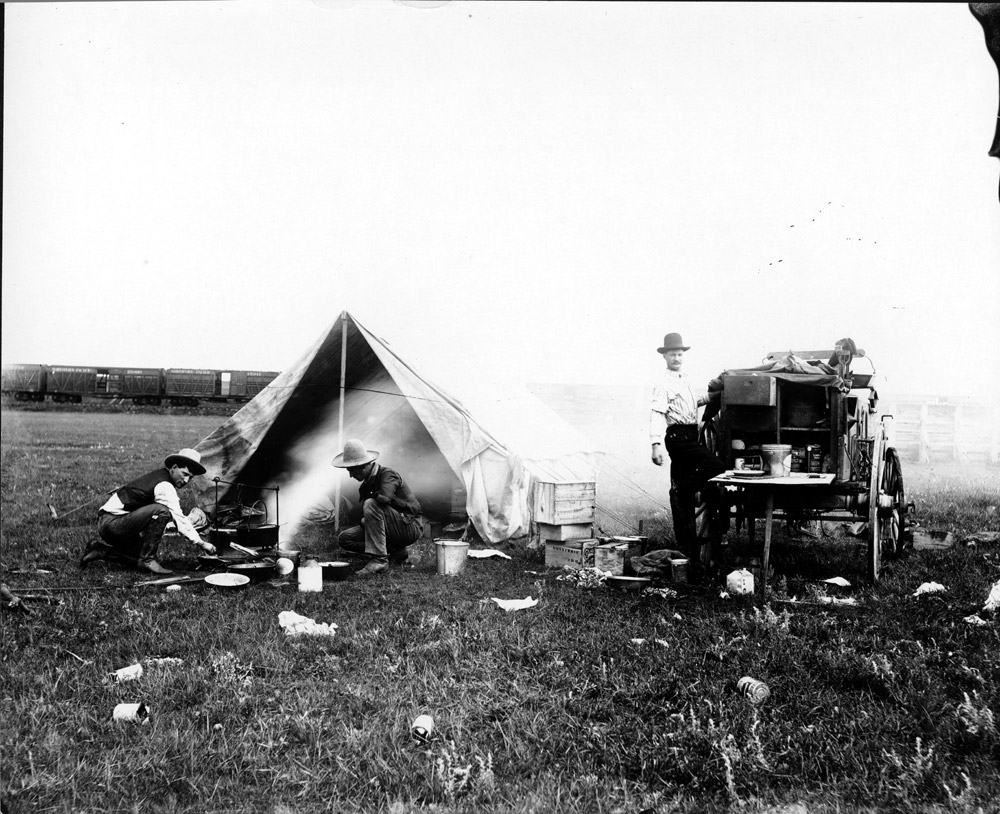
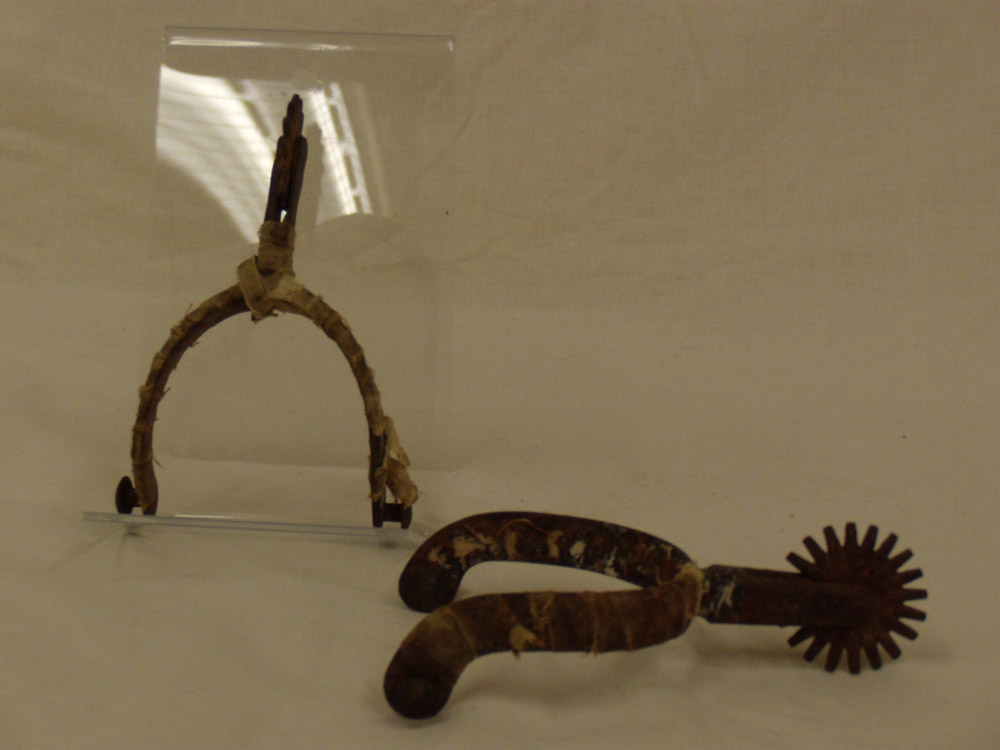
Some of the big ranches, like the OX and 777, had headquarters in Texas. (See Image 5) Cowboys drove the cattle north to Dakota in the spring, a journey that took several months. (See Image 6) Some ranchers shipped their cattle by train part of the distance. Then they drove them overland the rest of the way. (See Document 2) Most of these cattle were longhorns. Ranchers like Theodore Roosevelt and A.C. Huidekoper of Pennsylvania brought purebred bulls and English cattle from Iowa and Minnesota to their ranches. (See Image 7) Purebred bulls improved the quality of their cattle.
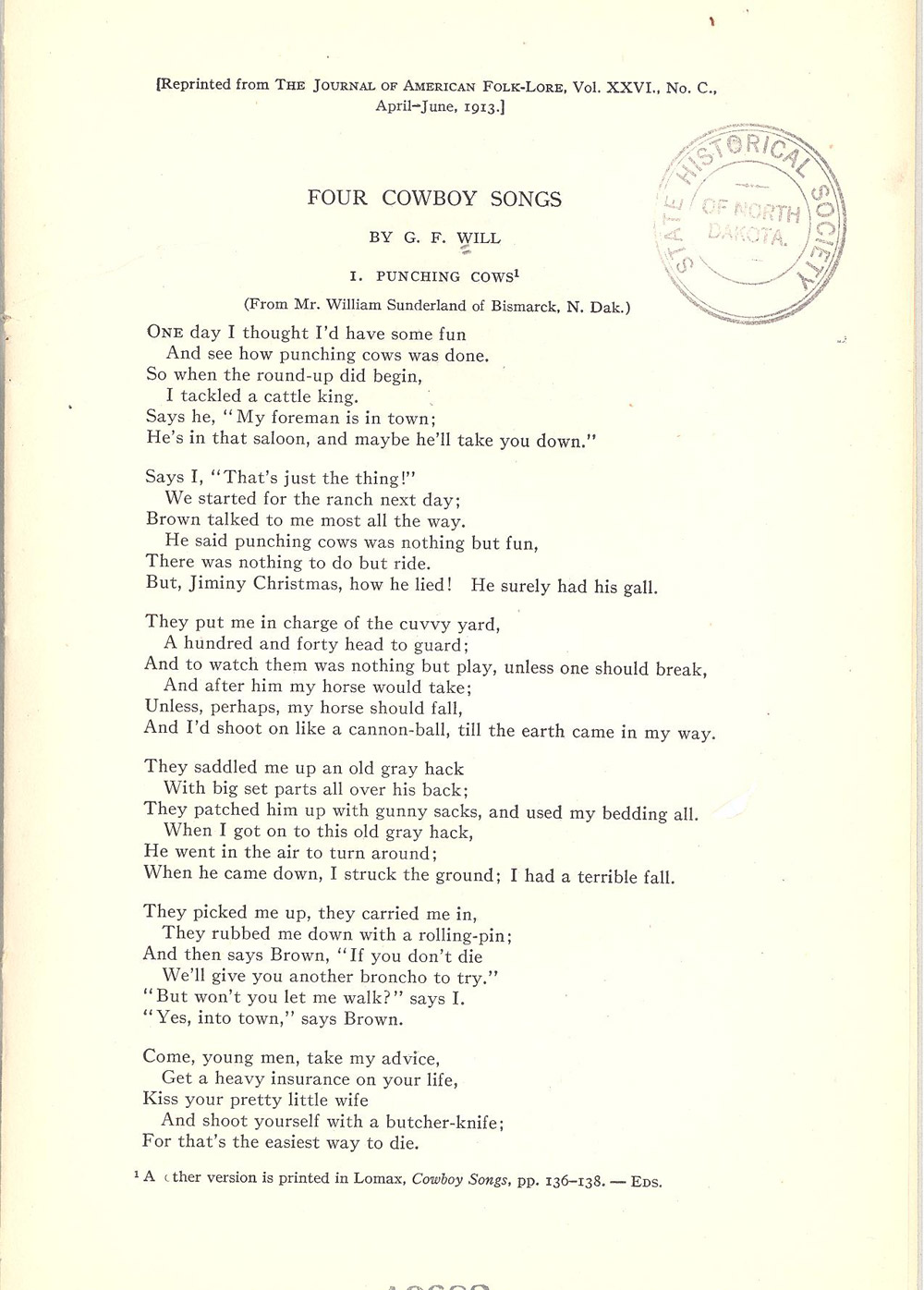
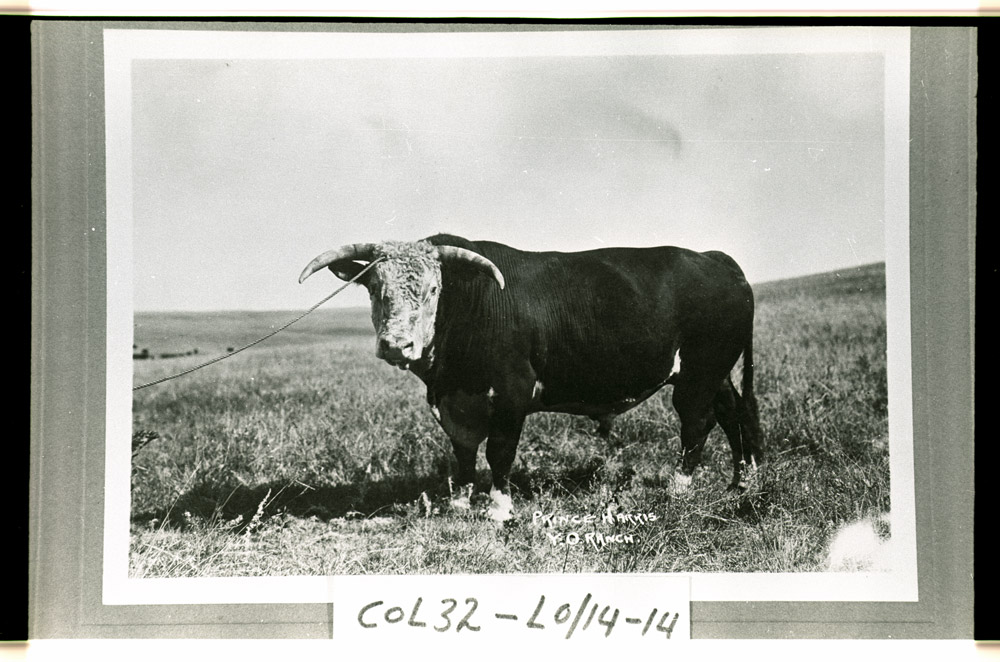
The promise of great wealth from free land and grass caused many ranchers to put too many cattle on the range. The range grasses did not grow well in very dry summers and cattle were sometimes too thin before winter. Open range ranchers did not make hay to supplement winter feed. They thought the cattle could paw through snow to get the remaining summer grass.
The summer of 1886 was dry, and little grass was left when winter started early. That winter, blizzards raged for days and the snow buried the grass deep. Cattle drifted with the wind and sometimes got stuck in snow drifts. Every rancher expected to lose a few cattle over the winter; the average winter loss was 5 per cent. In the spring of 1887, however, ranchers found they had lost 60 to 75 per cent of their herds in western Dakota. Theodore Roosevelt and others gave up ranching then. A. C. Huidekoper found that his horses survived that bad winter better than cattle. Huidekoper’s outfit, the HT, stopped raising cattle, but continued to raise draft horses he sold to eastern city businesses such as freight companies.
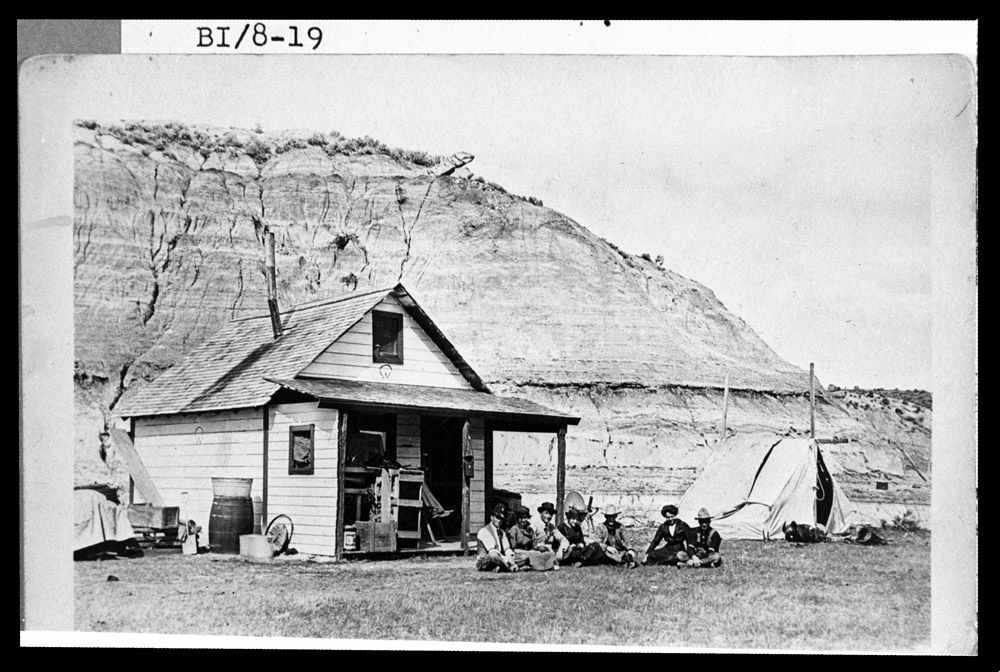
Other cattle ranchers re-built their herds and continued ranching. Open range ranches continued to prosper until around 1903. Then federal land agents made them give up their illegal use of federal lands so that homesteaders could make their claims. (See Image 8) This was the end of the open-range cattle industry. After that time, ranchers fenced their pastures and cut hay for winter feed. (See Image 9) They no longer needed round-ups to sort their cattle from those of their neighbors.
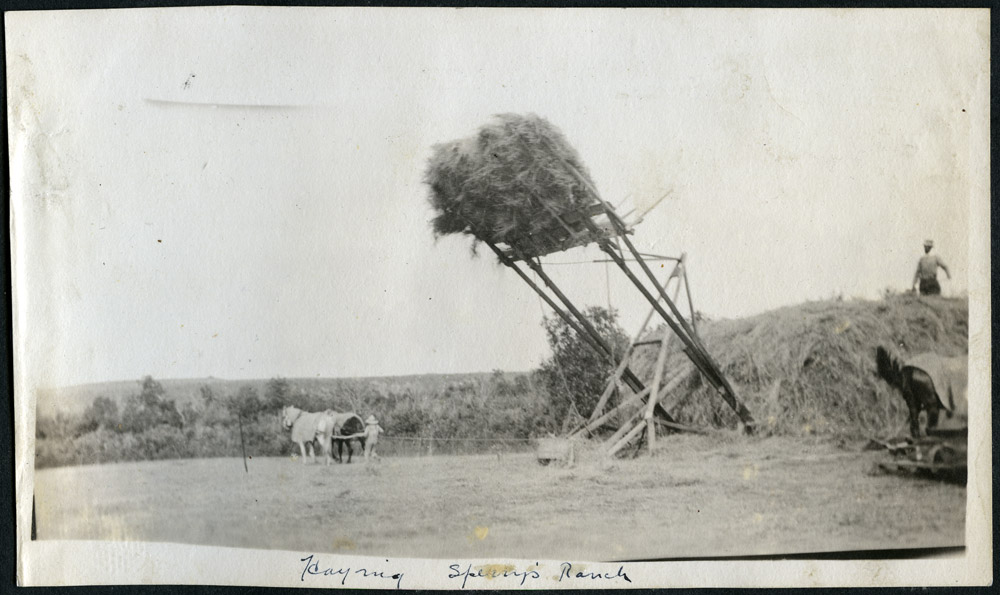
Why is this important? The open-range ranchers of western Dakota Territory made many economic contributions to the growth of the territory and the state. Wealthy eastern and foreign ranchers such as A.C. Huidekoper and Pierre Wibaux brought money and jobs to the region. They hired men who bought clothes and food from stores in little towns like Medora and Dickinson. The cowboys married and started families. Their children attended schools and churches. The railroad needed freight and depended upon the ranchers to ship cattle and horses to markets in the east. Ranching was a business that, like bison hunting, connected Dakota to the industrial markets of eastern states.
Pierre Wibaux and the W-bar ranch
In many ways, Pierre Wibaux was a typical rancher of the 1880s. He was a wealthy Frenchman who located his ranch headquarters on Beaver Creek in 1880. His early arrival gave him an advantage in locating his ranch on a well-watered creek about 15 miles from the railroad. His brand was a W with a bar beneath : W. The ranch stretched across the state line into Montana. He built a home in Mingusville (later called Wibaux), Montana where he spent some winters. (See Image 10)
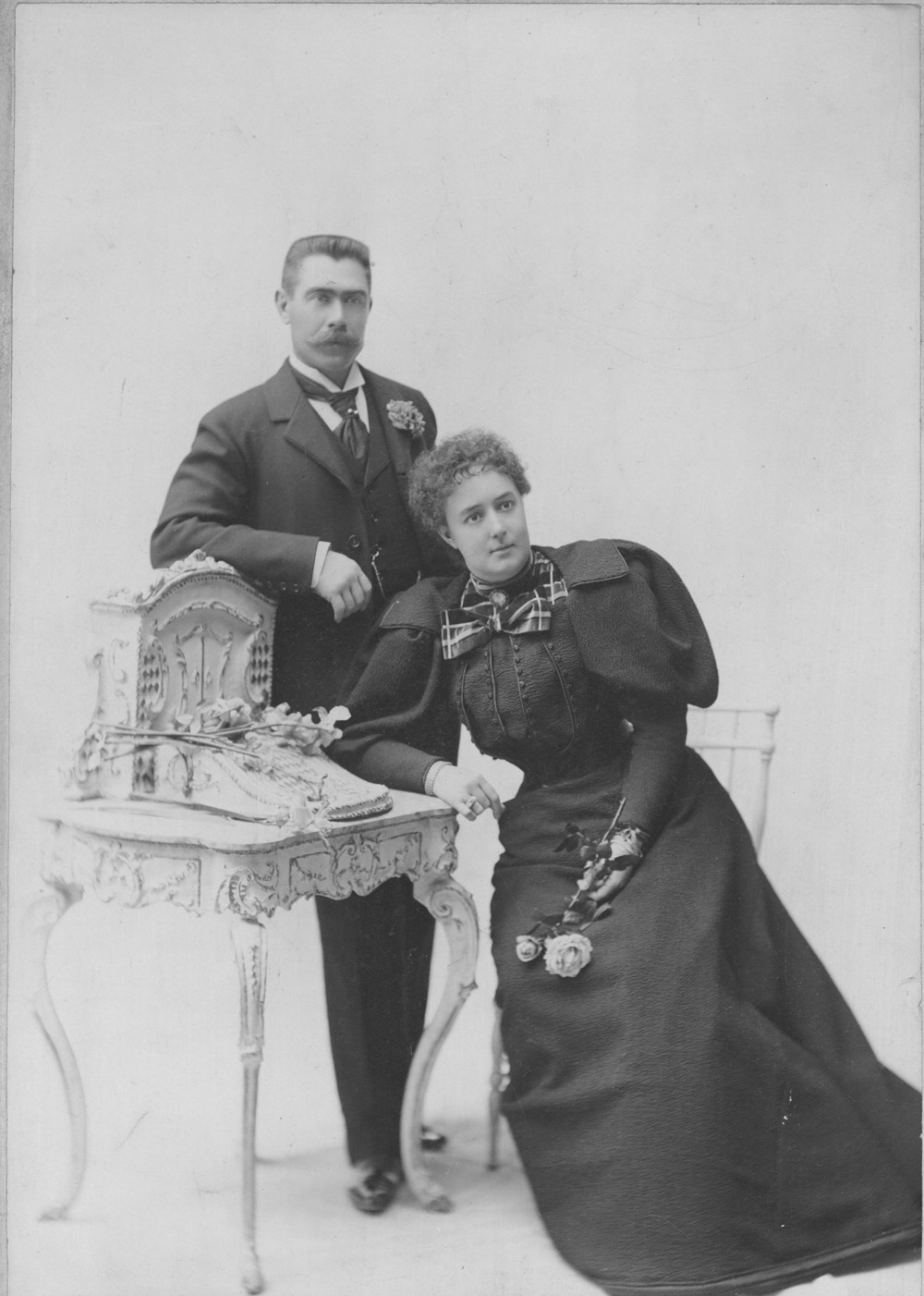
Wibaux built his first home, a log cabin measuring 14 feet by 16 feet, on the banks of Beaver Creek. In the beginning, he hired two men to work for him. He lived with his wife and son on the ranch. His ranch was small (800 head of cattle) until 1887. He lost most of his cattle during that bad winter. Instead of giving up, he borrowed money in France on good terms (no payments for ten years) and started buying cattle again. He built his herds up to 65,000 cattle and 300 saddle horses. In 1890 he shipped 12,000 head of cattle by rail.
As his herd grew, Wibaux hired more cowboys to work for him. At one time, he had 25 men working from spring round-up to fall round–up. Ten men stayed on through the winter. Cow hands made $35 to $40 per month plus room and board. The men reported to a foreman, or range boss. Many of the W-bar foremen went on to become prominent residents of the area.
In 1890, now a wealthy rancher, Wibaux built “The White House,” also called “The Palace,” as his ranch home. It was 15 miles from the nearest small town. Wibaux had all the lumber and other building materials for his house brought by wagon through the badlands. Water was brought into the house from the windmill near the barn. The yard featured a green grass lawn also watered by windmill.
Though Pierre Wibaux loved the ranch, Mrs. Wibaux returned to France every winter. She wanted their son to be educated in France.
In 1903, facing more competition for open range land, Wibaux purchased land from the Northern Pacific Railroad. He bought 36,000 acres for $35,597.52, or less than one dollar per acre. His purchase included some land in Montana and some in North Dakota. Soon, however, Wibaux’s financial interests turned in a different direction. It was apparent that ranching was becoming less profitable, so Wibaux sold the W-Bar for $16 per acre. The next several owners continued to operate a cattle ranch there, but “The White House” was abandoned and destroyed by fire in 1913.
Why is this important?The open range cattle industry in North Dakota had a very short history – about 20 years. Pierre Wibaux’s ranching operation tells us how Europeans and European-Americans used the public domain (federally owned land) to feed cattle. Wibaux and other ranchers grew rich because they had to invest very little of their own money. The beef they raised was cheap and plentiful. It provided good food for urban industrial workers and their families in cities like Chicago and New York.
The Big Lease
Between 1850 and 1890, the federal government created reservations for Indian tribes. In 1887, Congress passed the Allotment Act which assigned Indian families 160 acres of land within the reservation for their house and farm. By this time, the bison herds were gone from the Plains. Federal agents told reservation Indians to give up hunting and become farmers. The rest of the reservation land was owned in common for several years after that. In 1891, Congress passed a law allowing Indian tribes to lease (or rent) some of their tribal lands to outsiders for grazing.
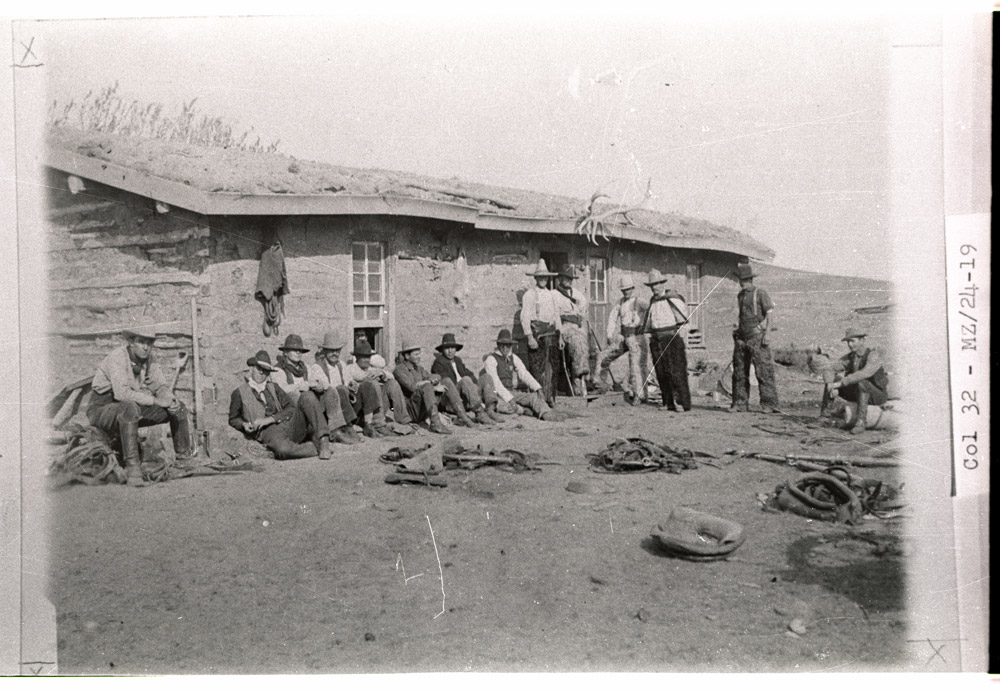
In 1903, a former railroad engineer named James Phelan leased much of the western half of the Fort Berthold reservation. Phelan owned no land at that time. He brought 10,000 head of cattle and 1,000 head of horses to the reservation. His animals grazed on 200,000 acres of reservation land that was called the Big Lease. Phelan’s ranch was known as the "75."The chuck wagon belonging to the “75” is on display at the Heritage Center Museum in Bismarck. Other ranch tools such as branding irons, chaps, and spurs, can also be seen in county museums and Historical Society sites. He established line shacks and cow camps for the 14 cowboys who worked year-round on the ranch. (See Image 11) Phelan built a fence around the Big Lease as required. He did not put up cross-fences. He treated this huge pasturage as open range.
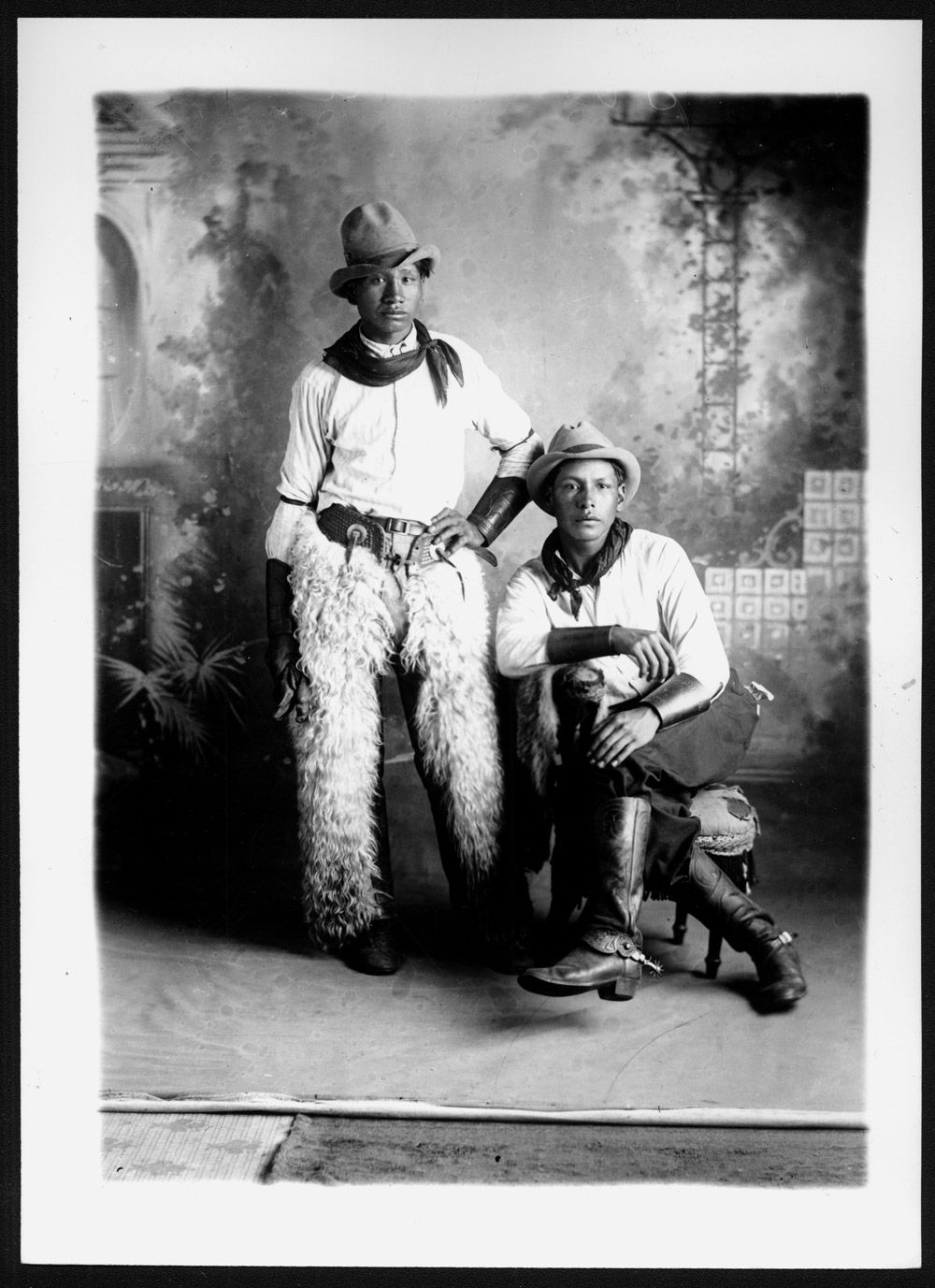
Phelan paid a little more than four cents per acre, or $9,455.72 per year, to the Fort Berthold reservation. The money was divided among the residents of Fort Berthold. There were about 1,000 people on the reservation in 1900, so each received a check for less than $10 per year from the lease. These checks were important to the residents of Fort Berthold because their annuities (payments for land) had expired in 1901. Phelan’s lease prevented other ranchers from using the range without paying rent.
Phelan and the ranchers who followed him made an effort to get to know their landlords. They visited with many Fort Berthold families. They hired Indian cowboys.One of these Indian cowboys was George Charging (1893 – 1952) who lived on the Fort Berthold Reservation. In 1910, when he was 17, he went to work for a non-Indian rancher on the Big Lease. Eventually he had his own ranch, competed in rodeos, and provided rodeo livestock for the State Fair. He participated in round-ups all around the reservation and off the reservation. In addition to ranching and rodeo, Charging was active in the Fort Berthold Tribal Council. He has been honored by the North Dakota Cowboy Hall of Fame. http://www.northdakotacowboy.com/?id=67&form_data_id=101 (See Image 12) Tribal members owned the land, kept a close eye on their tenant’s herds, and helped with round-ups. They knew how many cattle and horses were on the range. They used their friendship to let the ranchers know how to prevent over-grazing. One day, a tribal leader said to a rancher, “We aren’t here to start any fights but we wish you’d take off another 1,000 head and it wouldn’t hurt to take a lot more horses off [the range].” The rancher responded, “It’ll be done.”
Ranchers like Phelan became wealthy and powerful because of the Big Lease. Phelan later became a banker in Bowman. He eventually owned a 15,000 acre ranch. He also owned 15 grain elevators and served on the North Dakota Railroad Commission. The Big Lease was his big start.
Standing Rock Sioux reservation opened to leasing in 1902. The leases were forced upon the tribe by the Commissioner of Indian Affairs in Washington, D.C. Standing Rock fought the leases through the courts and appealed directly to President Theodore Roosevelt. With Roosevelt’s help, the tribe was able to cancel one lease. They arranged the rest of the lease area in such a way that homes and villages were not included. Still, the rent payment was very low. George Lemmon and his company paid only $24,048.64 for 788,480 acres on Standing Rock. The Lakota residents of Standing Rock received about $7 each from the rent. (See Image 13)
Document 3. The Sioux Cowboy Children's Book
Why is this Important? The Big Lease helped to bring both productivity to the land and a little much needed income to the people of the reservation. Though most North Dakota ranchers were working smaller ranches, ranchers with reservation leases used methods similar to those of the open range cattle industry (pre-1903). The cattle ranged freely in these huge pastures. Cowboys sorted the cattle for market in old-style round-ups. The ranchers who secured these leases became wealthy. Indians also benefitted in a small way with a few jobs and tribal income from the lease. The tribes began to raise cattle as a means of managing their tribal lands. The ranchers’ fences belonged to the tribes. However, the tribes could not start ranches of their own while non-Indian ranchers leased the land. The small income the tribes gained from the leases was not enough to eliminate poverty on the reservation.



